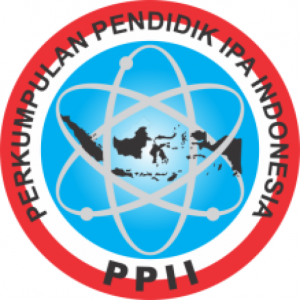Tuberculous Spondylitis: A Literature Review
Authors
Anjela Fatma LovelyDOI:
10.29303/jbt.v25i1.8314Published:
2025-03-13Issue:
Vol. 25 No. 1 (2025): Januari - MaretKeywords:
Clinical manifestation, complication, diagnose, phatophysiology, pott’s disease, spondylitis tuberculosis, treatment.Articles
Downloads
How to Cite
Downloads
Metrics
Abstract
Tuberculous (TB) spondylitis, often referred to as Pott's illness, this infectious condition affects the spine and is brought on by Mycobacterium tuberculosis. This literature review aims to increase information and knowledge related to TB spondylitis. The research method used is a type of literature review that discusses the pathophysiology, clinical manifestations, classification, risk factors, diagnosis, management, complications and prognosis of TB spondylitis. Data sources were retrieved through online databases that included literature reviews, research studies, and professional guidebooks over the past ten years related to this topic on library search sites such as Pubmed and Google Scholar. The search results were then reviewed to obtain literature relevant to the study objectives. TB spondylitis occurs in approximately 2% of all TB cases and 15% of all extrapulmonary TB cases, mostly affecting children and people with immunodeficiency due to HIV co-infection. The disease can be classified based on the Gülhane Askeri Tɪp Akademisi (GATA) and the American Spinal Injury Association (ASIA). The approach to the diagnosis of TB spondylitis is not only through history taking, clinical manifestations, and neurological examination, but also includes laboratory examination, radiological examination, and tissue samples examination. The management of TB spondylitis is generally divided into two types that can run simultaneously, namely medicamentosa (main) and surgery (complementary and adjusting the patient's condition). The disease can cause severe neurological symptoms and reduce the patient's quality of life, so early diagnosis and monitoring are necessary to avoid serious complications such as limb paralysis.
References
Basalamah, B., Khansa Nabila, B., Imran, Y., & Rahmansyah, M. (2020). Spondilitis tuberkulosis: perbaikan yang signifikan setelah intervensi dini. Jurnal Biomedika Dan Kesehatan, 3(3). https://doi.org/10.18051/JBiomedKes.2020
Berbudi, A., Rahmadika, N,. Tjahjadi, A. I., & Ruslami, R. (2020). Type 2 Diabetes and its Impact on the Immune System. Curr Diabetes Rev, 16, 442-449. https://doi.org/10.2174/1573399815666191024085838
Chen, C. H., Chen, Y. M., Lee, C. W., Chang, Y. J., Cheng, C. Y., & Hung, J. K. (2016). Early diagnosis of spinal tuberculosis. In Journal of the Formosan Medical Association, 115(10), 825–836. https://doi.org/10.1016/j.jfma.2016.07.001
Deepti, B. S., Munireddy, M., Kamath, S., & Chakrabarti, D. (2016). Cervical spine tuberculosis and airway compromise. Can J Anaesth, 63(6), 768–769. https://doi.org/10.1007/s12630-015-0575-9
Dunn, R. N., & Husien, M. Ben. (2018). Spinal tuberculosis. Bone Joint J, 100(4), 425–431. https://doi.org/10.1302/0301-620X.100B4
Floyd. K., Glaziou, P., Zumla, A., & Raviglione, M. (2018). The global tuberculosis epidemic and progress in care, prevention, and research: an overview in year 3 of the End TB era. Lancet Respir Med, 6(4), 299-314. https://doi.org/10.1016/S2213-2600(18)30057-2.
Handryastuti, S., Kaswandani, N., Hendriarto, A., Tobing, S. D. A. L., Pebriansyah, P., & Rafli, A. (2024). Clinical manifestations and prognosis of tuberculous spondylitis in an adolescent with disseminated tuberculosis: a case report. Paediatrica Indonesiana(Paediatrica Indonesiana), 64(2), 176–183. https://doi.org/10.14238/pi64.2.2024.176-83
Held, M., Laubscher, M., Zar, H. J., & Dunn, R. N. (2014). GeneXpert polymerase chain reaction for spinal tuberculosis: an accurate and rapid diagnostic test. Bone Joint J, 96- B(10), 1366–1369. https://doi.org/10.1302/0301-620X.96B10.34048.
Ismiarto, A. F., Tiksnadi, B., & Soenggono, A. (2018). Young to Middle-Aged Adults and Low Education: Risk Factors of Spondylitis Tuberculosis with Neurological Deficit and Deformity at Dr. Hasan Sadikin General Hospital. Althea Med J, 5(2), 69-76. https://dx.doi.org/10.15850/amj.v5n2.1420
Jain, A. K., Sreenivasan, R., Mukunth, R., & Dhammi, I. K. (2014). Tubercular spondylitis in children. Indian J Orthop, 48(2), 136-144. https://doi.org/10.4103/0019-5413.128747
Jia, C. G., Gao, J. G., Liu, F. S., Li, Z., Dong, Z. L., Yao, L. M., Wang, L. B., & Yao, X. W. (2020). Efficacy, safety and prognosis of treating neurological deficits caused by spinal tuberculosis within 4 weeks' standard anti-tuberculosis treatment: A single medical center's experience. Exp Ther Med, 19(1), 519-526. https://doi.org/10.3892/etm.2019.8253
Kothari, A., Khurjekar, K. S., Hadgaonkar, S., Viswanathan, V. K., Sancheti, P. K. (2014). Ultrasound-guided aspiration of Psoas abscess in a 28 year-old male: a case report, literature review and the relevance of this technique in the developing world. Asian Pac J Health Sci, 1(4), 307–311. https://doi.org/10.21276/apjhs.2014.1.4.2
Kusmiati, T., & Narendrani, P. H. (2016). POTT’S Disease. Jurnal Respirasi, 2(3), 99-109. https://doi.org/10.20473/jr.v2-I.3.2016.99-109
Leonard, M. K., & Blumberg, H. M. (2017). Musculoskeletal Tuberculosis. Microbiology Spectrum, 5(2). https://doi.org/10.1128/microbiolspec.TNMI7-0046-2017
Maynard-Smith, L., Larke, N., Peters, J. A., & Lawn, S. D. (2014). Diagnostic accuracy of the Xpert MTB/RIF assay for extrapulmonary and pulmonary tuberculosis when testing non-respiratory samples: a systematic review. BMC Infectious Diseases, 14(709). https://doi.org/10.1186/s12879-014-0709-7
Novita, B. D., Muliono, A. C., Wijaya, S., Theodora, I., Tjahjono, Y., Supit, V. D., & Willianto, V. M. (2022). Managing spondylitis tuberculosis in a patient with underlying diabetes and hypothyroidism: A case report. World Journal of Clinical Cases, 10(21), 7451–7458. https://doi.org/10.12998/wjcc.v10.i21.7451
Pagán A. J. & Ramakrishnan, L. (2015). Immunity and immunopathology in the tuberculous granuloma. Cold Spring Harb Perspect Med, 5(9). https://doi.org/10.1101/cshperspect.a018499
Qu, J. T., Jiang, Y. Q., Xu, G. H., Tang, Y., Wang, Z. T., Ye, X. J., Shi, G. H., Dong, J. W., Li, J., Zhou, J. L., & Hu, Y. (2015). Clinical characteristics and neurologic recovery of patients with cervical spinal tuberculosis: should conservative treatment be preferred? A retrospective follow-up study of 115 cases. World Neurosurg, 83(5), 700-707. https://doi.org/10.1016/j.wneu.2015.01.015
Rajasekaran, S., Kanna, R. M., & Shetty, A. P. (2014). Pathophysiology and treatment of spinal tuberculosis. JBJS Rev, 2(9). https://doi.org/10.2106/JBJS.RVW.M.00130
Rajasekaran, S., Soundararajan, D. C. R., Shetty, A. P., & Kanna, R. M. (2018). Spinal tuberculosis: current concepts. Global Spine J, 8(4S), 96S–108 S. https://doi.org/ 0.1177/2192568218769053
Sadewo, M., Sukmaningtyas, H., Priambodo, A., & Prihharsanti, C. H. N. (2023). Risk Factors Influencing the Degree of Tuberculous Spondylitis Based on MRI Modality. Indonesian Journal of Tropical and Infectious Disease, 11(3). https://doi.org/10.20473/ijtid.v11i3.45942
Sae-jung, S., Wongba, N., & Leurmprasert, K. (2019). Predictive factors for neurological deficit in patients with spinal tuberculosis. J Orthop Surg (Hong Kong), 27(3). https://doi.org/10.1177/2309499019868813
Sharma. S. K., Ryan, H., Khaparde, S., Sachdeva, K. S., Singh, A. D., Mohan, A., Sarin, R., Paramasivan, C. N., Kumar, P., Nischal, N., Khatiwada, S., Garner, P., & Tharyan, P. (2017). Index-TB guidelines: guidelines on extrapulmonary tuberculosis for India. Indian J Med Res, 145(4), 448–463. https://doi.org/10.4103/ijmr.IJMR_1950_16
Shetty, A. P., Viswanathan, V. K., & Rajasekaran, S. (2021). Cervical spine TB – Current concepts in management. Journal of Orthopaedic Surgery, 29(1S), 28S-40S. https://doi.org/10.1177/23094990211006936
Viorika, E. M., Yani, F. F., & Sahputra, R. E. (2021). A Case of Tuberculous Spondylitis in Child with Undernourish. In Jurnal Kesehatan Andalas, 10(1). https://doi.org/10.25077/jka.v10i1.1709
Weiss, G. & Schaible, U. E. (2015). Macrophage defense mechanisms against intracellular bacteria. Immunological reviews, 264(1), 182–203. https://doi.org/10.1111/imr.12266
WHO. (2021). Global tuberculosis report 2021. https://www.who.int/publications/i/item/9789240037021 (Accessed on December 19, 2024)
WHO. (2022). Tuberkulosis. https://www.who.int/indonesia/news/ campaign/tb-day-2022/fact-sheets (Accessed on December 19, 2024)
Widiasi, D., Yueniwati, Y., Norahmawati, E., & Setijowati, N. (2015). Kesesuaian MRI 1,0 Tesla untuk Membedakan Spondilitis dan Metastasis Vertebra dengan Konfirmasi Hasil Histopatologi. Jurnal Radiologi Indonesia, 1(2), 65-72. https://doi.org/10.33748/jradidn. v1i2.8
Yueniwati, Y. & Christina, E. (2017). The challenges in differentiating tuberculous from pyogenic spondylitis using magnetic resonance imaging. Reports Med Imaging, 10, 37–43. https://doi.org/10.2147/RMI.S129533
License
Copyright (c) 2025 Anjela Fatma Lovely

This work is licensed under a Creative Commons Attribution 4.0 International License.

Jurnal Biologi Tropis is licensed under a Creative Commons Attribution 4.0 International License.
The copyright of the received article shall be assigned to the author as the owner of the paper. The intended copyright includes the right to publish the article in various forms (including reprints). The journal maintains the publishing rights to the published articles.
Authors are permitted to disseminate published articles by sharing the link/DOI of the article at the journal. Authors are allowed to use their articles for any legal purposes deemed necessary without written permission from the journal with an acknowledgment of initial publication to this journal.


























